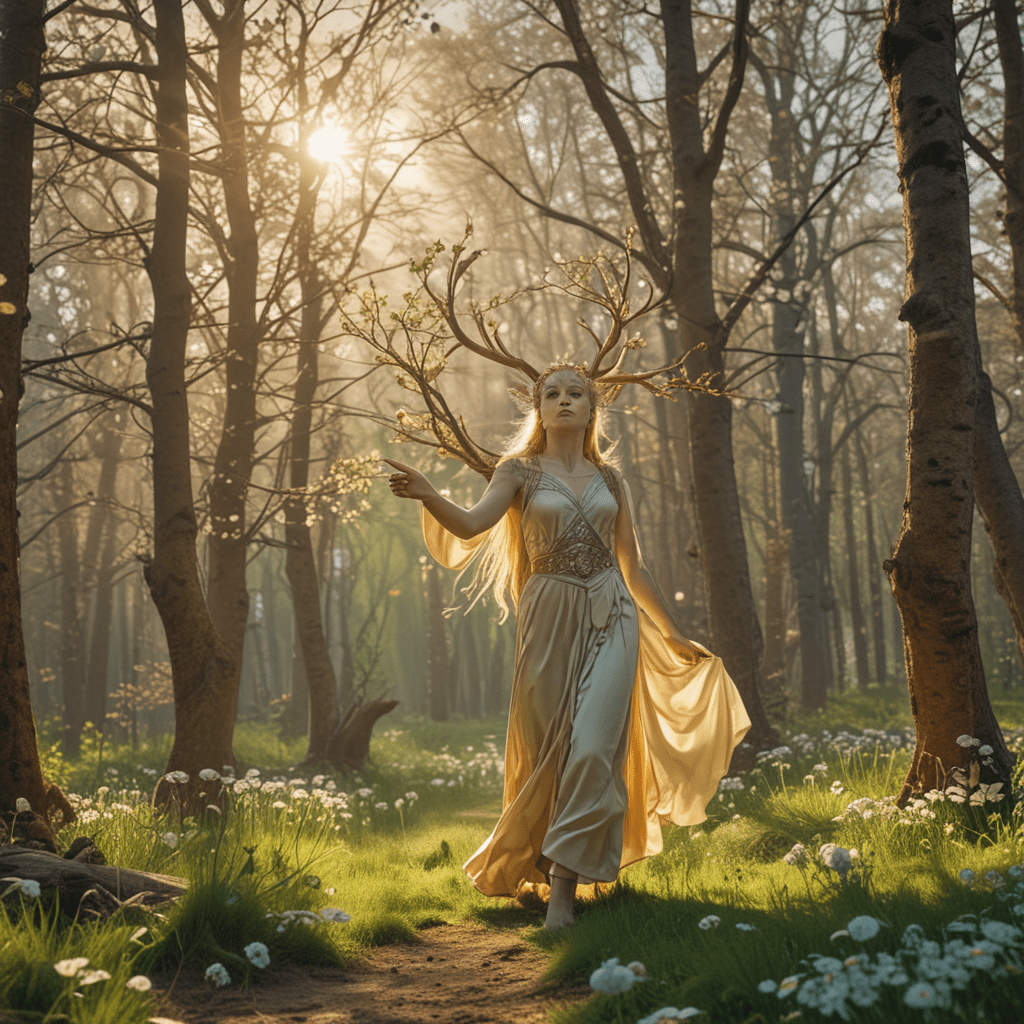Finnish Mythology: The Magic of the Spring Equinox
Introduction: Celebrating the Awakening of Nature
In the realm of Finnish mythology, the Spring Equinox holds immense significance as a time of rebirth, renewal, and the awakening of nature. It is a celebration of the triumph of light over darkness, a festival that honors the arrival of spring and the promise of new beginnings.
Ostara: The Goddess of the Dawn
Ostara, the goddess of the dawn, is the central figure associated with the Spring Equinox. Her name originates from the Proto-Indo-European word "ausos," meaning "east," representing the rising sun and the return of light after the long winter months. Ostara is believed to bring fertility and growth, nurturing the seeds that have lain dormant throughout the cold season.
The Rituals of Spring: Rebirth and Renewal
The Spring Equinox was a time for numerous rituals and festivities in Finnish folklore. People gathered around bonfires to celebrate the return of warmth and light, paying homage to their ancestors and seeking their blessings for the coming season. They would also engage in traditional cleansing rituals, such as sauna bathing, to purify themselves and welcome the new beginnings that spring brought.
Magical Herbs and Plants: Nature's Gifts
The arrival of spring also marked the emergence of various magical herbs and plants that were believed to possess unique properties. The birch tree, in particular, held great significance. Its branches were used for decoration and purification, and its sap was considered a symbol of vitality and renewal. Other important plants included the crocus, snowdrop, and dandelion, all of which were associated with fertility and growth.
The Power of Fire: Spring Bonfires and Candlelight
Fire has always held a sacred significance in Finnish mythology, and the Spring Equinox was no exception. Bonfires were lit throughout the country, symbolizing the triumph of light over darkness and the warmth that spring brought. People danced around the flames, sang songs, and shared stories, celebrating the renewed energy and vitality that the season represented. Candlelight also played an important role, as it was believed to ward off evil spirits and attract good fortune.
Music and Dance: Celebrating Life and Joy
Music and dance have always been an integral part of Finnish culture, and the Spring Equinox was a time for joyous celebrations. People gathered in open fields, played traditional instruments, and danced under the starry sky. These activities were not only a form of entertainment but also a way to honor the ancestors and connect with the natural world.
The Legend of the Hiisi: Forest Spirits and Ancestors
Finnish mythology is rich in tales of mythical creatures, and one of the most prominent during the Spring Equinox is the Hiisi. Hiisi is a forest spirit that embodies the wild and untamed aspects of nature. It is said to reside in deep forests and swamps, and those who venture into its domain may encounter strange and mysterious beings. According to legend, the Hiisi has a connection to the ancestors, and it is believed to guard the secrets of the ancient forest.
Modern Interpretations: Preserving Finnish Culture
The traditions and beliefs associated with the Spring Equinox continue to be celebrated in modern Finland. While some of the rituals and ceremonies may have evolved over time, the underlying themes of rebirth, renewal, and the triumph of light remain at the heart of these celebrations. Folk festivals, traditional music performances, and art exhibitions showcase the enduring legacy of Finnish mythology and its connection to the natural world.
Conclusion: The Enduring Legacy of the Spring Equinox
The Spring Equinox holds a profound significance in Finnish mythology, representing a time of immense transformation and renewal. From the rituals of Ostara to the cleansing powers of nature, from the vibrant bonfires to the joyous music and dance, the Spring Equinox is a testament to the enduring connection between the Finnish people and their ancient beliefs. Through modern interpretations and celebrations, the magic of the Spring Equinox continues to inspire and connect people today.
FAQs
Q: Who is Ostara, and what is her role in Finnish mythology?
A: Ostara is the goddess of the dawn, symbolizing the arrival of spring and the triumph of light over darkness. She is associated with fertility and growth, nurturing the seeds that have lain dormant throughout the winter months.
Q: What is the significance of bonfires during the Spring Equinox?
A: Bonfires represent the triumph of light over darkness and the warmth that spring brings. People danced around the flames, sang songs, and shared stories, celebrating the renewed energy and vitality that the season represented.
Q: What is the Hiisi, and what is its connection to Finnish mythology?
A: The Hiisi is a forest spirit that embodies the wild and untamed aspects of nature. It is said to reside in deep forests and swamps, and those who venture into its domain may encounter strange and mysterious beings. According to legend, the Hiisi has a connection to the ancestors and guards the secrets of the ancient forest.



